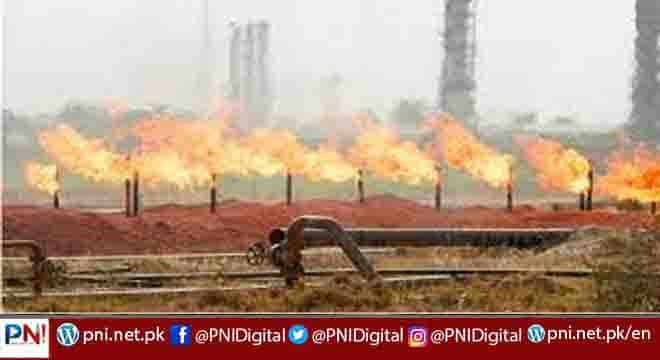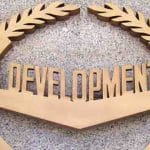ISLAMABAD, Jan 30 (APP):The country’s indigenous gas reserves are depleting at the rate of around nine per cent annually with the Exploration and Production (E&P) companies making no major discovery mainly due to the non-identification of new blocks by the past regimes.
This tendency not only continued depleting the existing resources but also made the consumers to bear the brunt of costly gas and oil products, the government had to import from international market.
If we look at the domestic gas extraction which varies around 3.5-7 Billion Cubic Feet per Day (BCFD) against the demand of 8 BCFD, it seems quite difficult for any government to meet the energy needs of domestic, commercial and industrial sectors efficiently.
“During the last two years, the existing gas reserves have declined by 18 per cent, and the consumption is on the rise consistently,” Minister for Energy Hammad Azhar has cautioned.
Cognizant of the situation, the present government made true calculation of the country’s existing and future energy needs and identified new onshore and offshore blocks and started its auction in phases. So far, the government has awarded around 30 new blocks and planning to award another 14 blocks in March 2022.
“Pakistan Tehreek-i-Insaf (PTI) government has so far held two bidding rounds for the award of new oil and gas blocks, and the third one will be conducted in March,” Minister for Energy said on his Twitter handle recently.
Advertisements for the purpose had already been published and under the third round, 14 new E&P blocks located in different parts of the country would be awarded.
“The past regime of PML-N did not conduct even a single bid-round during its five years in the government to meet the country’s ever-growing energy needs,” the minister said.
The blocks, spanning over 24,000 square kilometre area, have the resource potential of tapping around 15 Trillion Cubic Feet (TCF) gas and 180 Million Barrel (MBL) oil. The new bidding round would bring around $100 million investment and initiate $1.2 million social welfare schemes in surrounding localities of the awarded blocks.
Pakistan’s total sedimentary area is around 827,268 square kilometres, out of which 320,741 KM or 39 per cent of the area was under exploration.
Meanwhile, a senior official privy to petroleum sector development told APP that a new block takes almost four to five years in producing any result as it involves different phases like studies, testing, drilling, and installation of processing plans and pipelines.
Despite all odds, the official said the E&P companies, operating in different parts of the country, have drilled around 217 wells including 87 exploratory and 130 appraisal and development during a 40-month period.
As a result of the exploration and development activities, the official said the companies produced additional 32,496,029 barrel (BBL) oil and 1,436,546 million cubic feet (MMCF) gas in 2018-19; around 28,086,649 BBL oil and 1,316,635 MMCF gas in 2019-20; as many as 27,568,461 BBL oil and 1,279,243 MMCF gas in 2020-21 and 9,295,184 BBL oil and 415,366 MMCF gas in first four months of the current fiscal year.
In 2021-22, he said the E&P companies would hopefully produce around 29 million barrel (MBL) crude oil and 1.47 trillion cubic feet (TCF) gas and 917,731 tons of Liquefied Petroleum Gas (LPG) in total as per the set government target.
In 2020-21, the companies had produced around 27 MBL of crude oil, 1.27 TCF of gas and 764,775 tons LPG during the last year against the targets of 30 MBL oil, 1.43 TCF gas and 753,051 LPG.
The government is also in process of formulating a vibrant policy to exploit massive Shale gas and oil reserves by attracting multinational companies in the exploration sector of the country.
In 2015, a study completed in cooperation with the USAID (United States Agency for International Development) confirmed the presence of 10,159 trillion cubic feet (TCF) Shale gas and 2,323 billion of stock tank barrels (BSTB) Shale oil in place resources. It covered almost 271,700 km area (33% of total sedimentary area of the country) in the lower and middle Indus Basin in Sindh, southern parts of Punjab and eastern parts of Balochistan.
During the study, a detailed analysis of 124 wells was carried out, including laboratory analysis on Shale cores and cuttings for the purpose of validating Shale gas resource estimate, initial findings, assess the availability of required technology and infrastructure for Shale gas operations and formulate guidelines.
According to the Energy Information Administration (EIA) Shale Gas Assessment Report 2015 (USA); Pakistan has around 105 Trillion Cubic Feet of recoverable shale gas and 9.1 Billion Barrels of recoverable shale oil resources.
Following the discovery, a dedicated Shale gas and oil centre had been established at the Petroleum House to facilitate interested Exploration and Production companies to exploit the potential.
To determine the cost of extracting shale gas and oil, the Oil and Gas Development Company Limited (OGDCL) and United Energy Petroleum Limited (UEPL) had initiated drilling activities, under a pilot project near Hyderabad city.
The successful exploitation of shale gas could provide Pakistan with a sustainable supply of natural gas and oil (against EIA estimated recoverable gas resources).
Follow the PNI Facebook page for the latest news and updates.








